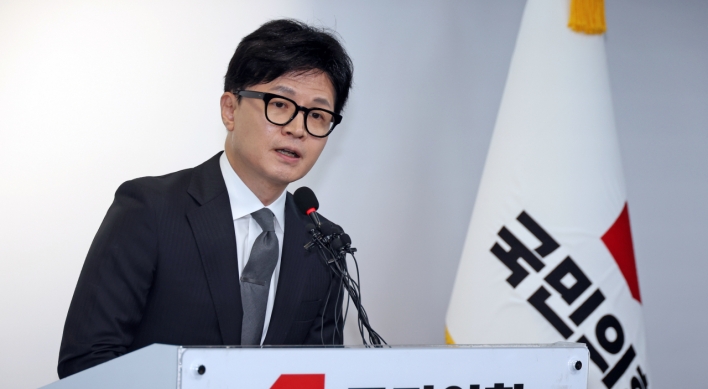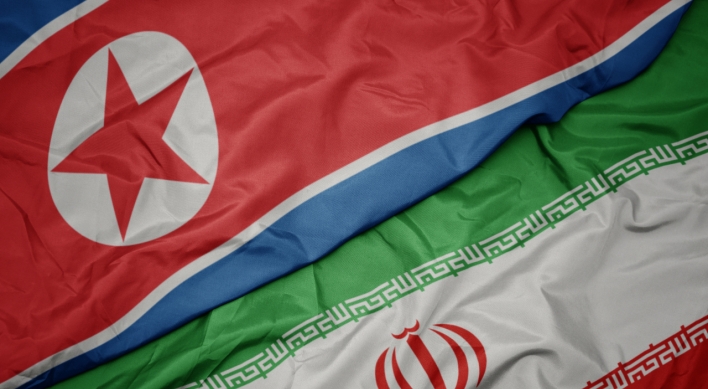At first glance, Edward Kwon's "bibimbap" doesn't appear even remotely Korean.
His take on the signature Korean dish, which typically mixes rice with vegetables, herbs and red pepper paste, is topped with a sesame tuile, a French-style baked wafer. Instead of plain rice, fried black rice and buckwheat nestle in a puddle of his special sauce combining "gochujang," the said red pepper paste, and mayonnaise.
The dish is among 10 fusion recipes Kwon developed for the 2018 Winter Olympics, which will draw hundreds of thousands of people to the remote South Korean alpine town of PyeongChang, some 128 kilometers east of Seoul.
Kwon, a celebrity chef who has worked at various luxury hotels in the U.S., China and the Middle East, will pass these recipes on to select PyeongChang restaurants in the hopes they become part of the established local cuisine.
"I had three requirements in mind for these dishes," the native of Yeongwol, just south of PyeongChang, told reporters at a demonstration in Seoul on Tuesday. "First, they had to utilize as many local ingredients as possible."
Indeed, all 10 dishes use at least one specialty ingredient from PyeongChang: buckwheat, cherry salmon, dried pollack, apples or beef. His dumplings, for instance, are filled not with typical pork but cherry salmon, and his fried rice is also topped with the fish found in the Pacific Ocean.
The second requirement was marketability; not only should the ingredients be readily available, recipes should be easy enough for anyone in PyeongChang to follow. And they must be tasty, too.
"My pasta takes as little as one and a half minutes especially if you've made it before," Kwon said. "Even if it's your first time cooking, it should only take between three and four minutes."
The pasta, made with buckwheat, is accompanied by soy sauce, shishito peppers and cherry tomatoes.
Lastly, Kwon said the dishes had to be globalized and not isolated to PyeongChang.
"Even after the Olympics, anyone who visits PyeongChang should be able to bring these foods back to their home countries," he said.
Hence his three desserts -- the rose-shaped apple pie, raisin- or sesame-coated balls of potatoes and corn, and his signature "chocolate potato," which literally resembles a pot of potatoes -- all of which may be stored at room temperature for a few days.
Kwon said with "chocolate potato," he wanted to throw in some Gangwon Province-style humor. Cheonhyehyang, a citrus unique to Jeju Island in the south, is coated with Gorgonzola cheese, cream cheese and white chocolate, rendering a shape like a potato.
Several of these are then placed in a tiny pot filled with chocolate soil.
"Nowadays, people like food that's not only delicious but also visually appealing," Kwon said. "That's how they become popular and go viral on social media."
Some of the other dishes featured are "bulgogi," Korean beef, with a side of the spicy Korean paste "ssamjang" and mayonnaise; a cutlet of pork, buckwheat and deodeok roots; and dried pollack noodles.
They will first become available to tourists at the Olympic Winter Festival slated for Dec. 18 to Jan. 31 in PyeongChang. (Yonhap)
- Korean premiere of Neumeier's 'The Little Mermaid' brings tale of love, sacrifice to stage
- [Herald Interview] Kukje Gallery's Lee Hyun-sook brings Korean artists to Venice Biennale
- Rocket engine expert, ex-NASA exec to lead Korea's new space agency
- [Herald Interview] 'Amid aging population, Korea to invite more young professionals from overseas'
- SK hynix pledges W20tr to ramp up DRAM production at home
- Nicaragua shuts down Seoul embassy
- [Herald Interview] 2 new villains in ‘The Roundup: Punishment’ differentiate themselves in the details
- Samsung Biologics Q1 earnings hit all-time high
- SK Leaveo to produce biodegradable wet wipes
- Orion's Turtle Chips sales soar in US



![[Exclusive] Korean military set to ban iPhones over 'security' concerns](http://res.heraldm.com/phpwas/restmb_idxmake.php?idx=644&simg=/content/image/2024/04/23/20240423050599_0.jpg&u=20240423183955)

![[Graphic News] 77% of young Koreans still financially dependent](http://res.heraldm.com/phpwas/restmb_idxmake.php?idx=644&simg=/content/image/2024/04/22/20240422050762_0.gif&u=)



![[Pressure points] Leggings in public: Fashion statement or social faux pas?](http://res.heraldm.com/phpwas/restmb_idxmake.php?idx=644&simg=/content/image/2024/04/23/20240423050669_0.jpg&u=)









